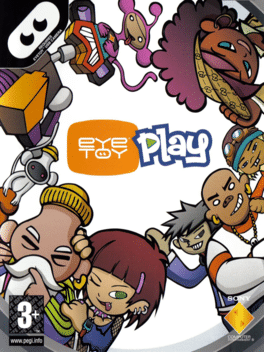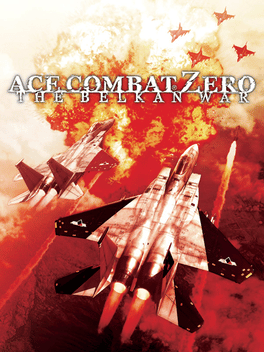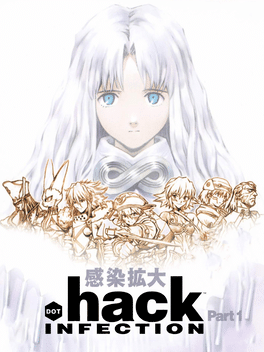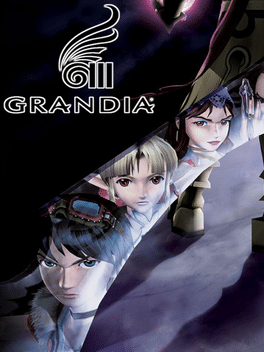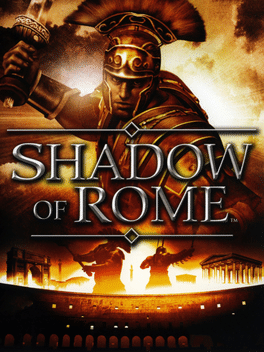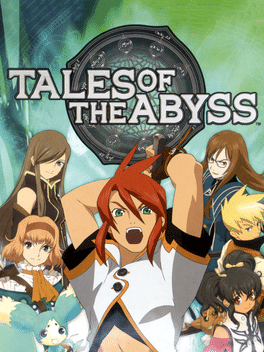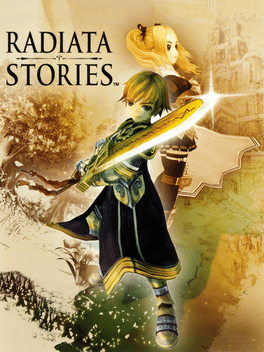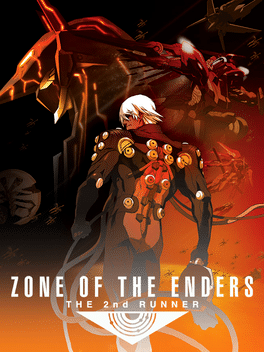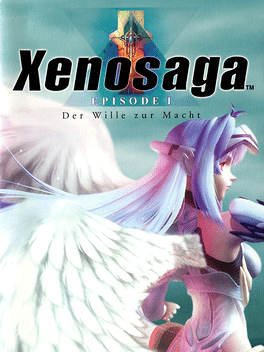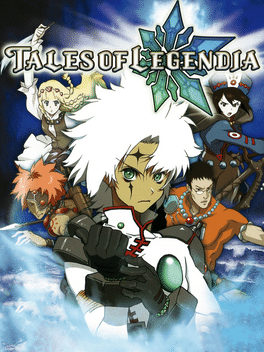Top Rated Playstation 2 Games - Page 4
-
Kingdom Hearts Final Mix
2002
star 7.7Originally released only in Japan on December 26, 2002, Kingdom Hearts Final Mix has several events and a number of gameplay tweaks that are not in previous releases. Spoken dialogue is in English, with Japanese subtitles. New scenes, clarifying certain plot points, such as Riku's journey and foreshadowing of Kingdom Hearts II, were included, but no new dialogue was recorded. A gameplay option allows the player to skip cutscenes after seeing them once. The optional bosses first included in the English version were introduced to Japanese players for the first time, along with a new fight against "Unknown Man," in an attempt to raise interest for the sequel. -
Atelier Iris: Eternal Mana
2004
star 7.7Atelier Iris: Eternal Mana is a Turn-Based RPG and with alchemy gameplay and story components. It is the 6th core Atelier game and the first game in the Iris series, being the first Ateleir game to be released internationally. The game follows the young alchemist Klein Kiesling, who is travelling to learn more about alchemy together with his friend, the Wood Mana, Popo. One day, he is saved from a monster by Lita Blanchimont, a young Galgazit, monster hunter. Lita eventually recruits him to become an Galgazit as well, and they start working together in the town of Kavoc. However, Klein is soon caught in many troubles, and eventually becomes involved in a quest of saving both the world and Lita. -
Yakuza
2005
Yakuza
2005
star 7.7Just as Kazuma, a former rising star in the Yakuza, emerges from prison after a murder cover-up, 10 billion yen vanishes from the Yakuza vault, forcing him once again into their brutal, lawless world. A mysterious young girl will lead Kazuma to the answers if he can keep her alive. -
EyeToy: Play
2003
EyeToy: Play
2003
star 7.6EyeToy: Play is a video game for the PlayStation 2, released in 2003. It was the first game to make use of the PlayStation 2's video camera accessory, EyeToy. The game was initially packaged with the EyeToy when the accessory was first released. It features twelve mini-games to choose from. This game, and all other EyeToy titles, are played by moving one's body. The motion is detected by the USB camera. The software recognizes pixel changes in the video image and compares the proximity of the change to other game objects to play the game. Users who get a high score get to take a photo to tease other players. -
Amplitude
2003
Amplitude
2003
star 7.6Amplitude is a music/rhythm game and is the sequel to 2001's Frequency. Like it's predecessor, players play songs by hitting notes on multiple tracks representing each instrument found in the song. -
Dragon Ball Z: Budokai Tenkaichi 2
2006
star 7.6Tenkaichi 2 is a fighting game with more than 120 playable characters, the biggest amount ever featured in a Dragon Ball game. The main Dragon Adventure mode follows an epic story mode that covers the first Dragon Ball Z saga (Saiyan Saga) right up to the last Dragon Ball GT saga (Dragon Saga), including all of the major battles, making it one of the most comprehensive Dragon Ball Z games. -
Ace Combat Zero: The Belkan War
2006
star 7.6The sixth installment in the Ace Combat series explores the Belkan War, a devastating conflict alluded to in Ace Combat 5. In the game's main story mode, the player takes control of a mercenary pilot, callsign "Cipher", taking part in the Belkan War by advancing through aerial combat, escort, assault, and defense missions. The story is told through the eyes of a reporter, 10 years after the conflict, uncovering secrets of the war by interviewing some of the pilots the player shoots down. -
.Hack//Infection
2002
.Hack//Infection
2002
star 7.6.Hack//Infection is the first of a series of four games, titled .hack//Infection, .hack//Mutation, .hack//Outbreak, and .hack//Quarantine, features a "game within a game"; a fictional massively multiplayer online role-playing game (MMORPG) called The World which does not require the player to connect to the Internet. Players may transfer their characters and data between games in the series. Each game comes with an extra DVD containing an episode of .hack//Liminality, the accompanying original video animation series which details fictional events that occur concurrently with the games. The games are part of a multimedia franchise called Project .hack which explores the mysterious origins of The World. Set after the events of the anime series .hack//Sign, the games focus on a player named Kite and his quest to discover why some users have become comatose as a result of playing The World. The search evolves into a deeper investigation of The World and its effects on the stability of the Internet. -
Xenosaga Episode II: Jenseits von Gut und Böse
2004
star 7.5Xenosaga Episode II: Jenseits von Gut und Böse is a direct sequel to the first episode of the science-fiction RPG Xenosaga series. -
Cold Winter
2005
Cold Winter
2005
star 7.5In "Cold Winter", you play the role of Andrew Sterling, a former member of MI6, the British secret intelligence service. Andrew is caught preparing to assassinate someone in China, and is thrown into prison. There he faces torture and imminent execution. But a former friend from his MI6 days arranges to rescue him and offers him a job, having planned in advance to manipulate him so that he is unable to refuse. The first task seems fairly ordinary: to track down a weapons dealer who has been supplying terrorists. -
.Hack//Quarantine
2003
.Hack//Quarantine
2003
star 7.5.Hack//Quarantine is the fourth of a series of four games, titled .hack//Infection, .hack//Mutation, .hack//Outbreak, and .hack//Quarantine, features a "game within a game"; a fictional massively multiplayer online role-playing game (MMORPG) called The World which does not require the player to connect to the Internet. Players may transfer their characters and data between games in the series. Each game comes with an extra DVD containing an episode of .hack//Liminality, the accompanying original video animation series which details fictional events that occur concurrently with the games. The games are part of a multimedia franchise called Project .hack which explores the mysterious origins of The World. Set after the events of the anime series .hack//Sign, the games focus on a player named Kite and his quest to discover why some users have become comatose as a result of playing The World. The search evolves into a deeper investigation of The World and its effects on the stability of the Internet. -
Grandia III
2005
Grandia III
2005
star 7.5Grandia III is a role-playing video game developed by Game Arts and published by Square Enix for the PlayStation 2 console. Set in a fantasy world where technology has allowed man to fly in magic-powered aircraft, a boy named Yuki is determined to become a great pilot like his idol, the Sky Captain Schmidt. When he and his mother encounter a girl named Alfina who has the ability to communicate with the spiritual guardians of the world, they become involved in the plot to discover the secrets of the world's past and face an evil rogue guardian named Xorn. -
Shadow of Rome
2005
Shadow of Rome
2005
star 7.5The year is 44 B.C. The grandeur of the Republic of Rome has been tarnished by political corruption and society has been overrun by unruliness and violence. Julius Caesar advocates for drastic reform but he is met with opposition and murdered. The horrific news finds its way to the ears of one soldier, Agrippa, whose father is accused of the murder. Unfortunately, time is running out for Agrippa as his father is to be publicly executed by the winner of the next gladiatorial event. Venture throughout ancient Rome with the help of Agrippas best friend, Octavius, and a female gladiator named switch between Agrippa and Octavius, each of whom have their own area of expertise, to rescue Agrippas father and uncover the switch between Agrippa and Octavius, each of truth. -
Tales of the Abyss
2005
Tales of the Abyss
2005
star 7.5This entry in Namco's popular Tales series takes place in a world where prophecies clue people in to future happenings. Tales of the Abyss boasts a revolutionary new free roaming battle system allowing players to move anywhere on the battlefield, a first in the Tales series which brings new depth to the intense, high-action battles that Tales games are knows for. -
Radiata Stories
2005
Radiata Stories
2005
star 7.4Radiata Stories is a fantasy role-playing game set in a world where humans and fairies have peacefully coexisted. Now a war has broken out, and you must guide two young protagonists in a mission to save Radiata from destruction. Combat features a real-time link system in which multiple characters can combine abilities to form more powerful attacks. Radiata Stories also features an interactive environment and more than 175 characters that you can recruit to join and help you on your quest. -
Downhill Domination
2003
Downhill Domination
2003
star 7.4Downhill Domination is a video game based on a fictional racing event with fictional racers mixed with a few unlockable professional racers. The game was released exclusively for the PlayStation 2. Downhill Domination includes a very different style of gameplay that differs from standard bike racing games by having the character riding downhill almost exclusively (hence the name), due to the incline of the tracks. -
Zone of the Enders: The 2nd Runner
2003
star 7.4The sequel to Zone of the Enders is based around mecha combat with the player once again controlling the "Orbital Frame" Jehuty. Unlike its prequel, the game is now centered on action elements with the player not needing to protect civilians in need and instead Jehuty contains more weaponry than in the previous game. The plot is set two years after the events from Zone of the Enders and focuses on Dingo Egret, a former member from Mars' military organization BAHRAM whose leader Ridley "Nohman" Hardiman wants back with him. Nohman shoots Dingo following his rejection but the agent Ken Marinaris saves Dingo by connecting his body to Jehuty and forces to work in order to defeat BAHRAM. The game had a new director, Shuyo Murata, who producer Hideo Kojima appointed in order to provide a different experience. The team worked to cover the criticism the original Zone of the Enders received resulted in The 2nd Runner having more action elements. The game received generally favorable critical response due to the improvemen -
Xenosaga Episode I: Der Wille zur Macht
2002
star 7.4Xenosaga: Episode I - Der Wille zur Macht, the first chapter of a trilogy, is a Japanese-style sci-fi role-playing game, sharing many common themes and gameplay elements with Xenogears. The battle system is not unlike the one used in Xenogears (combo attacks, AP and EP gauges, etc.), but random encounters are eliminated. Instead, the enemies are now visible and battles can be avoided. During combat the few upcoming ally and enemy turns are shown onscreen, allowing the player to make strategic decisions based on who will act next. A rolling slot moves with each turn as well, conferring a bonus such as added damage or bonus XP for any action on that turn. If the enemy would be in position to take an advantage then the player can expend a character's "boost" gauge to cut in and act next, although enemies can boost as well, and enemy boosts always over-ride player boosts. Each character has a unique tree of Ether spells they can learn by spending Ether points earned in battle, with lower spells requiring spells above -
Harry Potter and the Chamber of Secrets
2002
star 7.4The PlayStation 2 version was ported internally by Electronic Arts instead of by Eurocom who developed the other console versions, hence the PS2 version sporting some noticeable differences. but otherwise keeping the majority of the game the same. Some differences include the PS2 version of the game having an overall lower difficulty level plus when Harry is riding a broom he can land it anywhere instead of only in designated landing spots. -
Tales of Legendia
2005
Tales of Legendia
2005
star 7.4Tales of Legendia is a fantasy role-playing game that continues the Tales series of games. You can play as Senel Coolidge, who encounters a giant, mysterious ship while adrift in a small boat with his sister. As you explore the history of the ship, you will encounter epic enemies and engage them using the "X-LiMBS" battle system, which lets you fight in real time like in a fighting game. The story is beset with unique characters designed by the animator featured in Kill Bill Vol. One.



